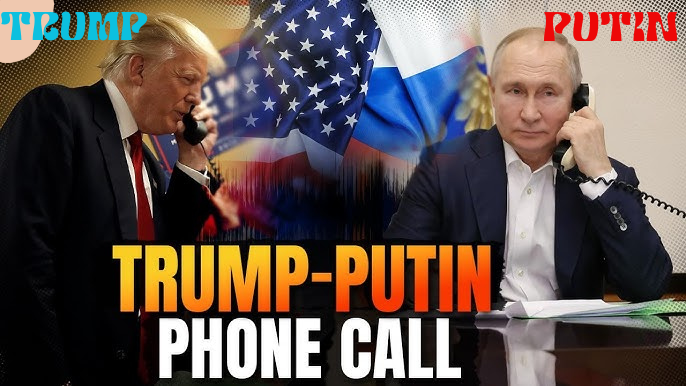Ahead of the call, Putin delivered an anti-Western speech, dismissing the G7 and asserting that Western powers would continue to undermine Russia despite sanctions.
A phone call between U.S. President Donald Trump and Russian President Vladimir Putin regarding a potential 30-day ceasefire in Ukraine has begun and is progressing “well,” the White House announced on Tuesday. Trump has already indicated a willingness to discuss which parts of occupied Ukraine Russia might retain, stating over the weekend that Washington and Moscow were negotiating the “division of certain assets.” The call, which started at 1400 GMT, has raised concerns in Kyiv and European capitals that Trump might concede too much to Putin, a leader he has frequently praised. White House Deputy Chief of Staff Dan Scavino confirmed that the discussion, lasting nearly an hour, was ongoing. “Happening Now—President Trump is currently in the Oval Office speaking with President Vladimir Putin of Russia since 10:00am EDT. The call is going well, and still in progress,” Scavino wrote on X.

During the conversation, both leaders are expected to explore possible measures to restore peace while addressing key demands. While Kyiv has agreed to a 30-day halt in fighting to facilitate talks, Putin has set multiple conditions, including halting U.S. arms supplies to Ukraine. Trump, on his Truth Social platform, acknowledged that while “many elements of a final agreement have been agreed to, much remains” to be resolved.
Ahead of the call, Putin delivered an anti-Western speech, dismissing the G7 and asserting that Western powers would continue to undermine Russia despite sanctions. Meanwhile, Ukraine’s Foreign Minister Dmytro Kuleba stated, “It is time for Russia to show whether it really wants peace.” Kyiv remains cautious, with President Volodymyr Zelenskyy warning that Putin seeks to strengthen his military position before agreeing to any truce. Moscow has continued its relentless assaults, occupying significant territory in eastern and southern Ukraine.
Putin has made it clear that he opposes NATO peacekeeping troops in Ukraine and demands an end to U.S. military aid to Kyiv—issues likely to dominate his conversation with Trump. Trump’s push for a ceasefire gained momentum after his surprise call with Putin in February, which caught Western allies off guard. The move led to a public Oval Office clash with Zelensky on February 28, resulting in a temporary freeze of U.S. military aid to Ukraine.
Trump, this Sunday, hinted at negotiations over “land” and “power plants,” likely referencing the Russian-occupied Zaporizhzhia nuclear facility—the largest in Europe. Zelenskyy insists that territorial discussions should follow, not precede, a ceasefire. As Trump pushes to fulfill his campaign promise to end the Ukraine war, he continues to blame Joe Biden’s policies for prolonging the conflict. “It must end NOW,” Trump declared on Truth Social.
Meanwhile, in Russia’s Kursk region, authorities evacuated civilians from areas retaken from Ukraine last summer. Putin has touted recent battlefield gains as a major success, calling on Ukrainian troops to surrender. As the Trump-Putin talks unfold, global leaders remain on edge over the future of the Ukraine war and the potential implications of a U.S.-brokered ceasefire.
(With inputs from agencies)
